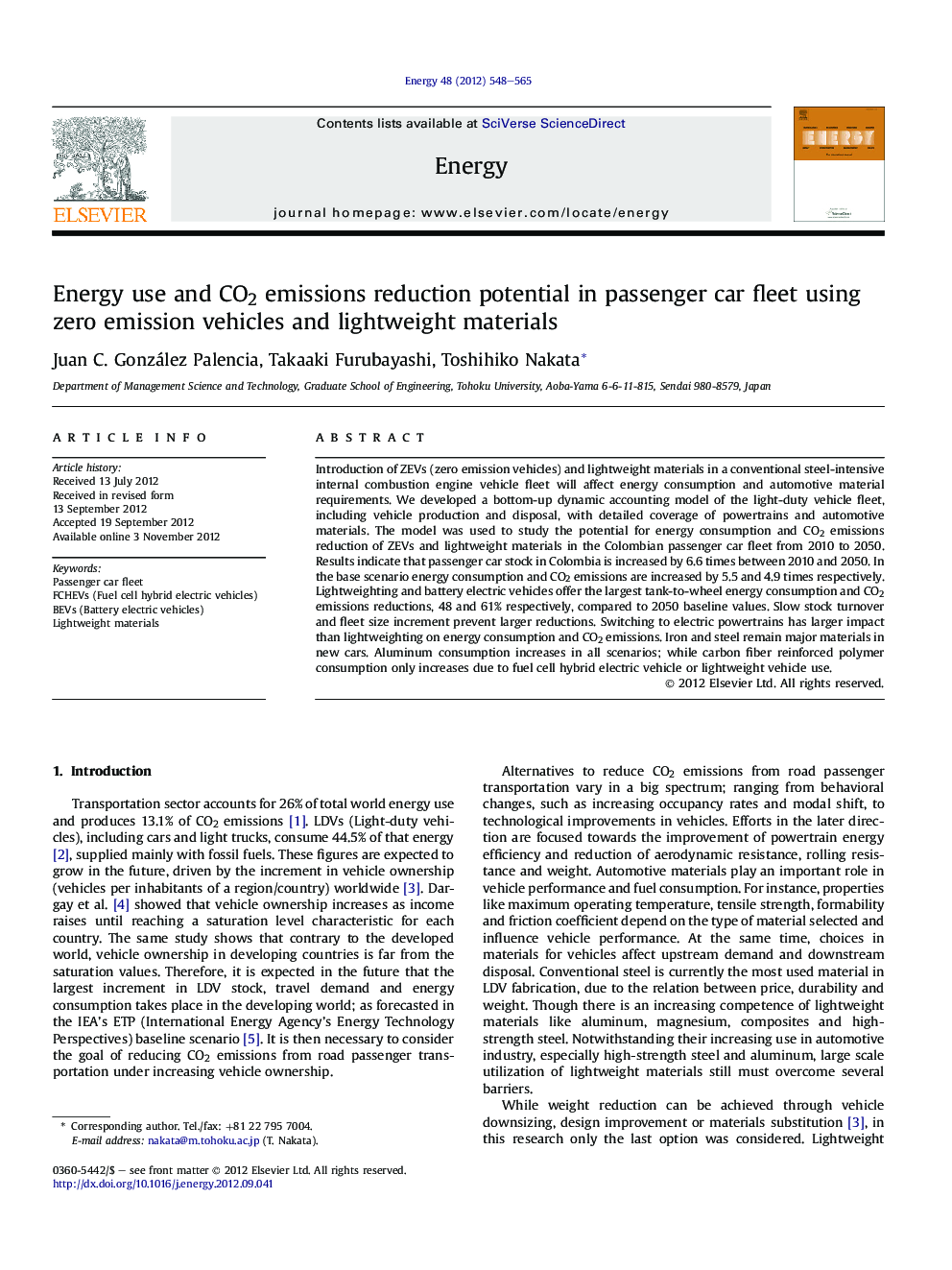| کد مقاله | کد نشریه | سال انتشار | مقاله انگلیسی | نسخه تمام متن |
|---|---|---|---|---|
| 1733380 | 1016139 | 2012 | 18 صفحه PDF | دانلود رایگان |

Introduction of ZEVs (zero emission vehicles) and lightweight materials in a conventional steel-intensive internal combustion engine vehicle fleet will affect energy consumption and automotive material requirements. We developed a bottom-up dynamic accounting model of the light-duty vehicle fleet, including vehicle production and disposal, with detailed coverage of powertrains and automotive materials. The model was used to study the potential for energy consumption and CO2 emissions reduction of ZEVs and lightweight materials in the Colombian passenger car fleet from 2010 to 2050. Results indicate that passenger car stock in Colombia is increased by 6.6 times between 2010 and 2050. In the base scenario energy consumption and CO2 emissions are increased by 5.5 and 4.9 times respectively. Lightweighting and battery electric vehicles offer the largest tank-to-wheel energy consumption and CO2 emissions reductions, 48 and 61% respectively, compared to 2050 baseline values. Slow stock turnover and fleet size increment prevent larger reductions. Switching to electric powertrains has larger impact than lightweighting on energy consumption and CO2 emissions. Iron and steel remain major materials in new cars. Aluminum consumption increases in all scenarios; while carbon fiber reinforced polymer consumption only increases due to fuel cell hybrid electric vehicle or lightweight vehicle use.
► A car fleet model with detailed coverage of powertrains and materials was developed.
► The role of zero emission vehicles and lightweighting in CO2 emissions reduction in Colombia was studied.
► Vehicle lightweighting enhances energy savings and CO2 reductions achieved using zero emission vehicles.
► Slow stock turnover prevents the realization of larger CO2 emission reductions.
► Iron and steel remain major automotive materials despite aggressive lightweighting.
Journal: Energy - Volume 48, Issue 1, December 2012, Pages 548–565